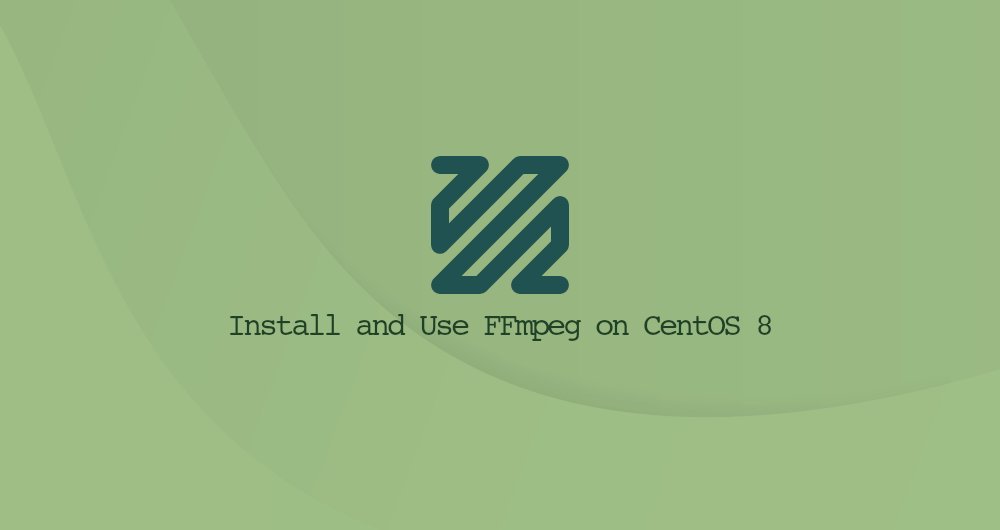How to install FFmpeg on CentOS 8

FFmpeg is a free and open source tool set for processing multimedia files. It contains a series of audio and video libraries, such as: libavcodec, libavformat, and libavutil. Using FFmpeg, you can convert between various video and audio formats, set the bit rate, edit audio, video, and scale video.
This article mainly describes how to install FFmpeg on CentOS 8.
1. Install FFmpeg on CentOS 8
FFmpeg is not provided in the default CentOS 8 source repository. You can choose to compile and install FFmpeg from source files, or use the dnf tool to install from the Negativo17 source repository. We will use the second option.
Complete the following steps to install FFmpeg on CentOS 8:
- Negativo17 software source depends on EPEL and PowerTools software source. Run the following command as root or another user with sudo privileges to enable the necessary software sources:
sudo dnf install epel-release
sudo yum config-manager --set-enabled PowerTools
sudo yum-config-manager --add-repo=https://negativo17.org/repos/epel-multimedia.repo
- Once the software source is enabled, install FFmpeg:
sudo dnf install ffmpeg
- Verify the FFmpeg installation by checking the version number:
ffmpeg -version
At the time of writing this article, the current version of FFmpeg in the Negativo17 software source is 2.8.15.
ffmpeg version 4.2.2Copyright(c)2000-2019 the FFmpeg developers
built with gcc 8(GCC)...
This command will also print out FFmpeg configuration options.
that's it. FFmpeg has been installed on your CentOS machine, and you can start using it.

Second, use FFmpeg
In this chapter, we will look at a basic example on how to use ffmpeg.
2.1 Basic conversion###
When using ffmpeg to convert audio and video files, you do not need to specify the input and output formats. The input file format will be automatically detected, and the output format will be guessed from the file extension.
- Convert a video file from mp4 to webm
ffmpeg -i input.mp4 output.webm
- Convert an audio file from mp3 to ogg
ffmpeg -i input.mp3 output.ogg
2.2 Use codec###
When converting files, use the -c option to specify the codec. It can be the name of any supported encoder or decoder, or a special value copy means that only the input stream is copied.
- To convert a video file from mp4 to webm, use the
libvpxvideo codec and thelibvorbisaudio codec:
ffmpeg -i input.mp4 -c:v libvpx -c:a libvorbis output.webm
- Convert an audio file from mp3 to ogg, using the'libopus' codec
ffmpeg -i input.mp3 -c:a libopus output.ogg
Three, summary##
We have shown how to install FFmpeg on CentOS 8. You should now browse official FFmpeg documentation page and learn how to use FFmpeg to convert your video and audio files.
Recommended Posts